Voltage Balance Control Analysis of Three-Level Boost DC-DC Converters: Theoretical Analysis and DSP-Based Real Time Implementation
Abstract
:1. Introduction
2. Three-Level Boost DC–DC Converter Small Signal Modeling
3. Three-Level Boost DC–DC Converter Voltage Balance Control (VBC) Analysis
4. Summary and Conclusions
Author Contributions
Funding
Conflicts of Interest
References
- Sun, Y.; Ma, L.; Zhao, D.; Ding, S. A Compound Controller Design for a Buck Converter. Energies 2018, 11, 2354. [Google Scholar] [CrossRef]
- Rashid, M.H. Power Electronics Handbook, 3rd ed.; Butterworth-Heinemann: Oxford, UK, 2011. [Google Scholar]
- Monmasson, E. Power Electronic Converters-PWM Strategies and Current Control Techniques; ISTE Ltd.: London, UK, 2011. [Google Scholar]
- Gerard, V.P.; Eduard, A. CMOS Integrated Switching Power Converters; Springer: New York, NY, USA, 2009. [Google Scholar]
- Reza Tousi, S.M.; Moradi, M.H.; Basir, N.S.; Nemati, M. A function-based maximum power point tracking method for photovoltaic systems. IEEE Trans. Power Electron. 2016, 31, 2120–2128. [Google Scholar] [CrossRef]
- Hossain, M.Z.; Rahim, N.A.; Selvaraj, J. A/L Recent progress and development on power DC-DC converter topology, control, design and applications: A review. Renew. Sustain. Energy Rev. 2018, 81, 205–230. [Google Scholar] [CrossRef]
- Patel, H.; Agarwal, V. Maximum power point tracking scheme for PV systems operating under partially shaded conditions. IEEE Trans. Ind. Electron. 2008, 55, 1689–1698. [Google Scholar] [CrossRef]
- Miao, K.; Ramachandaramurthy, V.K.; Yong, J.Y. Integration of electric vehicles in smart grid: A review on vehicle to grid technologies and optimization techniques. Renew. Sustain. Energy Rev. 2016, 53, 720–732. [Google Scholar]
- Goli, P.; Shireen, W. PV powered smart charging station for PHEVs. Renew. Energy 2014, 66, 280–287. [Google Scholar] [CrossRef]
- Torreglosa, J.P.; Fern, L.M.; García-trivi, P.; Jurado, F. Control and operation of power sources in a medium-voltage direct- current microgrid for an electric vehicle fast charging station with a photovoltaic and a battery energy storage system. Energy 2016, 115, 38–48. [Google Scholar]
- El Aroudi, A.; Robert, B.; Martinez-Salamero, L. Modelling and analysis of multi-cell converters using discrete time models. In Proceedings of the IEEE International Symposium on Circuits and Systems, Island of Kos, Greece, 21–24 May 2006; pp. 2161–2164. [Google Scholar]
- Zhang, Y.; Shi, J.; Fu, C.; Zhang, W.; Wang, P.; Li, J.; Sumner, M. An Enhanced Hybrid Switching-Frequency Modulation Strategy for Fuel Cell Vehicle Three-Level DC-DC Converters with Quasi-Z Source. Energies 2018, 11, 1026. [Google Scholar] [CrossRef]
- Hafez, A.A.A. Multi-level cascaded DC/DC converters for PV applications. Alex. Eng. J. 2015, 54, 1135–1146. [Google Scholar] [CrossRef]
- Zajec, P.; Nemec, M. Theoretical and Experimental Investigation of the Voltage Ripple across Flying Capacitors in the Interleaved Buck Converter with Extended Duty Cycle. Energies 2018, 11, 1017. [Google Scholar] [CrossRef]
- Chen, H.C.; Lin, W.J. MPPT and voltage balancing control with sensing only inductor current for photovoltaic-fed, three-level, boost-type converters. IEEE Trans. Power Electron. 2014, 29, 29–35. [Google Scholar] [CrossRef]
- Zhang, Y.; Sun, J.T.; Wang, Y.F. Hybrid boost three-level DC-DC converter with high voltage gain for photovoltaic generation systems. IEEE Trans. Power Electron. 2013, 28, 3659–3664. [Google Scholar] [CrossRef]
- Bougrine, M.D.; Benalia, A.; Benbouzid, M.H. Simple sliding mode applied to the three-level boost converter for fuel cell applications. In Proceedings of the International Conference on Control, Engineering and Information Technology, Tlemcen, Algeria, 25–27 May 2015; pp. 1–6. [Google Scholar]
- Yaramasu, V.; Wu, B. Predictive control of a three-level boost converter and an NPC inverter for high-power PMSG-based medium voltage wind energy conversion systems. IEEE Trans. Power Electron. 2014, 29, 5308–5322. [Google Scholar] [CrossRef]
- Ruan, X.; Li, B.; Chen, Q.; Tan, S.C.; Tse, C.K. Fundamental considerations of three-level DC-DC converters: Topologies, analyses, and control. IEEE Trans. Circuits Syst. I Regul. Pap. 2008, 55, 3733–3743. [Google Scholar] [CrossRef] [Green Version]
- Ma, H.; Yang, C.; Zhang, Y.Y. Analysis and design for single-phase three-level boost PFC converter with quasi-static model. In Proceedings of the 37th Annual Conference of the IEEE Industrial Electronics Society, Melbourne, VIC, Australia, 7–10 November 2011; pp. 4385–4390. [Google Scholar]
- Krishna, R.; Soman, D.E.; Kottayil, S.K.; Leijon, M. Pulse delay control for capacitor voltage balancing in a three-level boost neutral point clamped inverter. IET Power Electron. 2015, 8, 268–277. [Google Scholar] [CrossRef]
- Meleshin, V.; Sachkov, S.; Khukhtikov, S. Three-level boost converters. Modes, sub-modes and asymmetrical regime of operation. In Proceedings of the 16th European Conf. on Power Electronics and Applications, Lappeenranta, Finland, 26–28 August 2014; pp. 1–10. [Google Scholar]
- Middlebrook, R.D.; Cuk, S. A general unified approach to modelling switching-converter power stages. In Proceedings of the Power Electronics Specialists Conference, Cleveland, OH, USA, 8–10 June 1976; pp. 18–34. [Google Scholar]
- Khaldi, H.S.; Ammari, A.C. Fractional-order control of three level boost DC/DC converter used in hybrid energy storage system for electric vehicles. In Proceedings of the 6th International Renewable Energy Congress, Sousse, Tunisia, 24–26 March 2015; pp. 1–7. [Google Scholar]
- Nouri, A.; Salhi, I.; Elwarraki, E.; El Beid, S.; Essounbouli, N. DSP-based implementation of a self-tuning fuzzy controller for three-level boost converter. Electr. Power Syst. Res. 2017, 146, 286–297. [Google Scholar] [CrossRef]
- Rivera, S.; Wu, B. Electric Vehicle Charging Station with an Energy Storage Stage for Split-DC Bus Voltage Balancing. IEEE Trans. Power Electron. 2016, 32, 2376–2386. [Google Scholar] [CrossRef]
- Tan, L.; Zhu, N.; Wu, B. An Integrated Inductor for Eliminating Circulating Current of Parallel Three-Level DC–DC Converter-Based EV Fast Charger. IEEE Trans. Ind. Electron. 2016, 63, 1362–1371. [Google Scholar] [CrossRef]
- Tan, L.; Wu, B.; Yaramasu, V.; Rivera, S.; Guo, X. Effective Voltage Balance Control for Bipolar-DC-Bus-Fed EV Charging Station With Three-Level DC–DC Fast Charger. IEEE Trans. Ind. Electron. 2016, 63, 4031–4041. [Google Scholar] [CrossRef]
- Vitoi, L.A.; Krishna, R.; Soman, D.E.; Leijon, M.; Kottayil, S.K. Control and implementation of three level boost converter for load voltage regulation. In Proceedings of the Industrial Electronics Society Conference, Vienna, Austria, 10–13 November 2013; pp. 561–565. [Google Scholar]
- Tan, L.; Wu, B.; Rivera, S.; Yaramasu, V. Comprehensive DC Power Balance Management in High-Power Three-Level DC–DC Converter for Electric Vehicle Fast Charging. IEEE Trans. Power Electron. 2016, 31, 89–100. [Google Scholar] [CrossRef]
- Xia, C.; Gu, X.; Shi, T.; Yan, Y. Neutral-Point Potential Balancing of Three-Level Inverters in Direct-Driven Wind Energy Conversion System. IEEE Trans. Energy Convers. 2011, 26, 18–29. [Google Scholar] [CrossRef]
- Oulad-Abbou, D.; Doubabi, S.; Rachid, A.; García-Triviño, P.; Fernández-Ramírez, L.M.; García-Vázquez, C.A.; Sarrias-Mena, R. Combined control of MPPT, output voltage regulation and capacitors voltage balance for three-level DC/DC boostconverter in PV-EV charging stations. In Proceedings of the International Symposium on Power Electronics, Electrical Drives, Automation and Motion (SPEEDAM), Amalfi, Italy, 20–22 June 2018; pp. 372–376. [Google Scholar]
- Costa, L.F.; Mussa, S.A.; Barbi, I. Capacitor voltage balancing control of multilevel DC-DC converter. In Proceedings of the Brazilian Power Electronics Conference, Gramado, Brazil, 27–31 October 2013; pp. 332–338. [Google Scholar]
- Zhao, Q.; Fang, Y.; Ma, M.; Wang, J.; Xie, Y. Study on a Fuzzy Controller for the Balance of Capacitor Voltages of Three-Level Boost Dc-Dc Converter. In Proceedings of the International Power Electronics and Application Conference and Exposition (PEAC), Shanghai, China, 5–8 November 2014; pp. 993–996. [Google Scholar]
- Mobarrez, M.; Ghanbari, N. Subhashish Bhattacharya Control Hardware-in-the-Loop Demonstration of a Building-Scale DC Microgrid Utilizing Distributed Control Algorithm. In Proceedings of the PES General Meeting 2018, Portland, OR, USA, 5–9 August 2018. [Google Scholar]

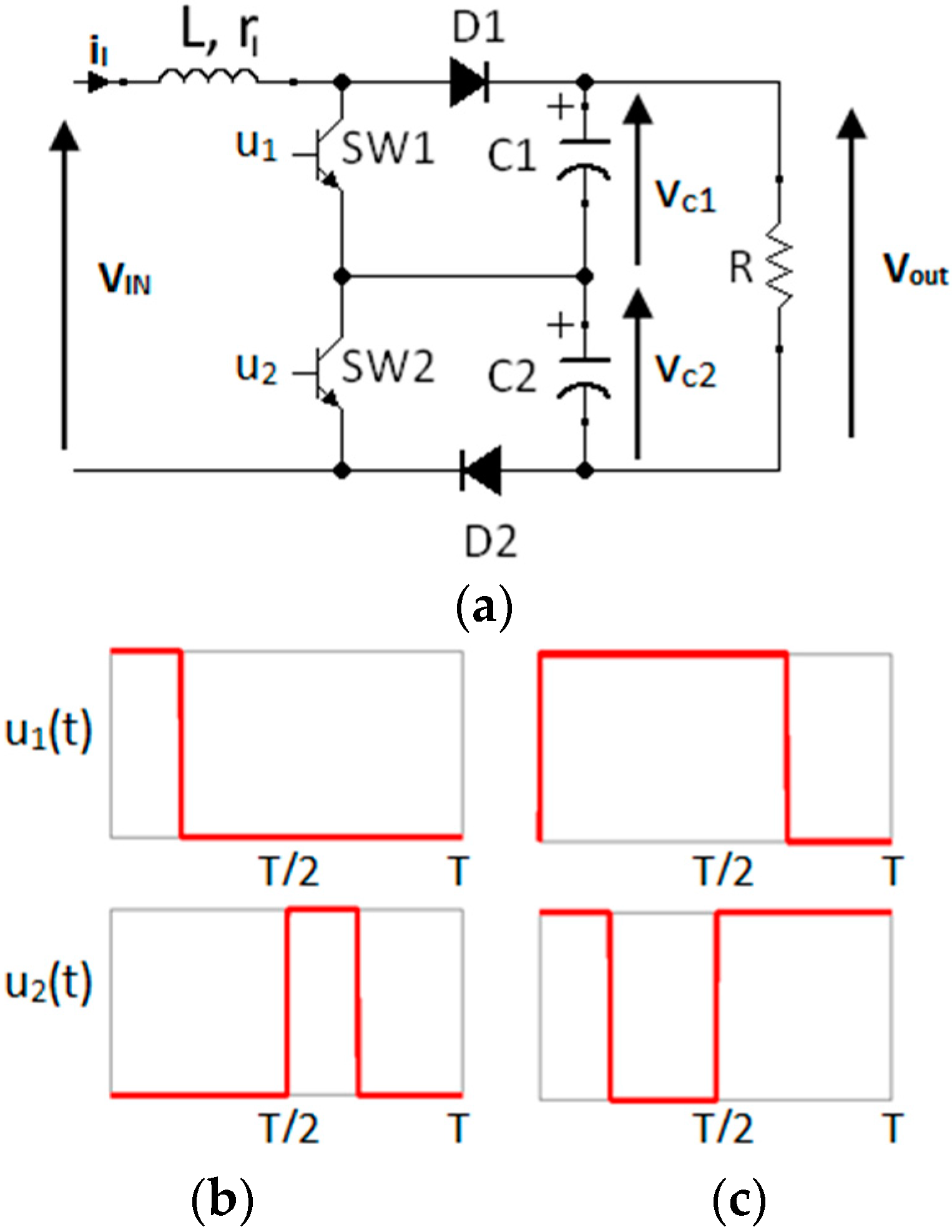
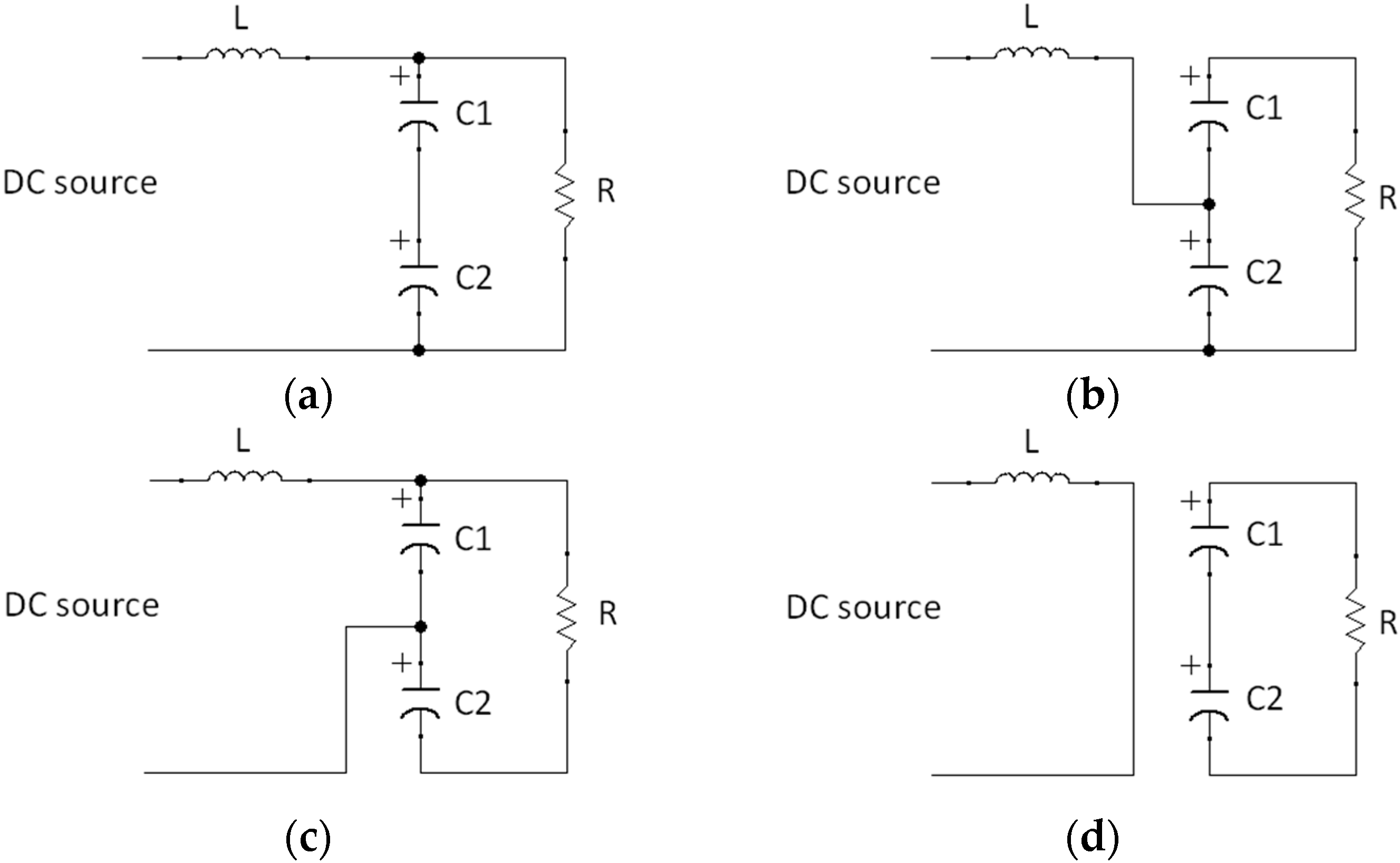
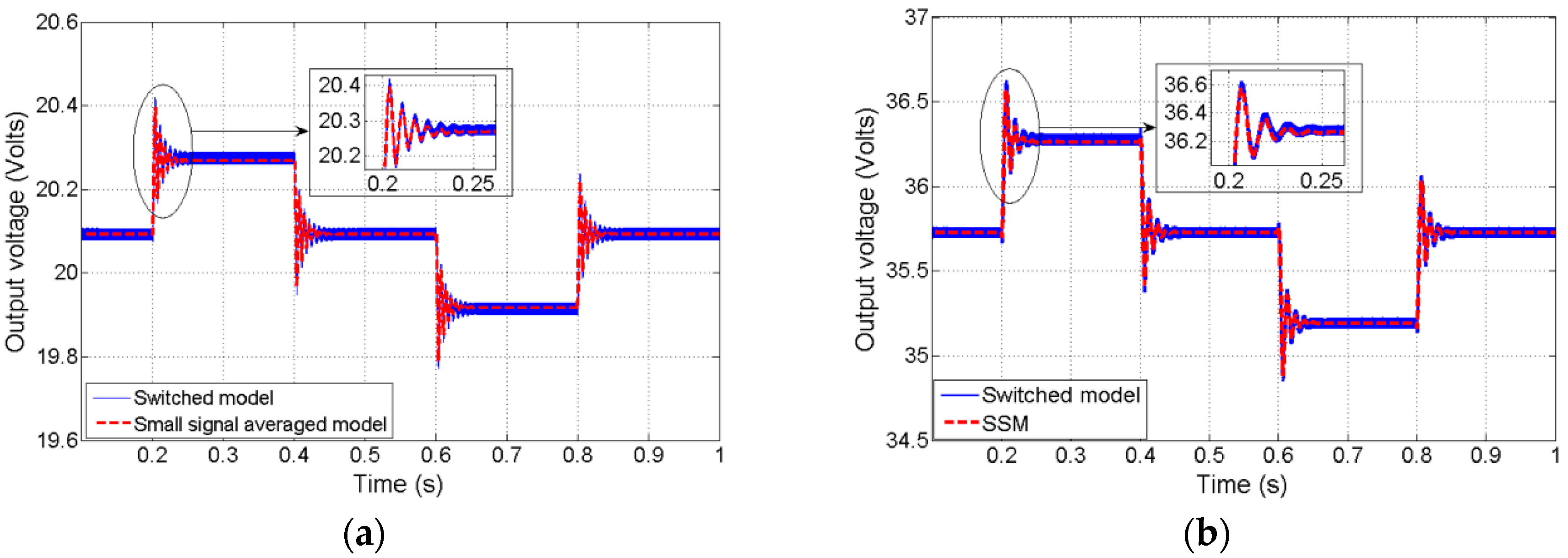

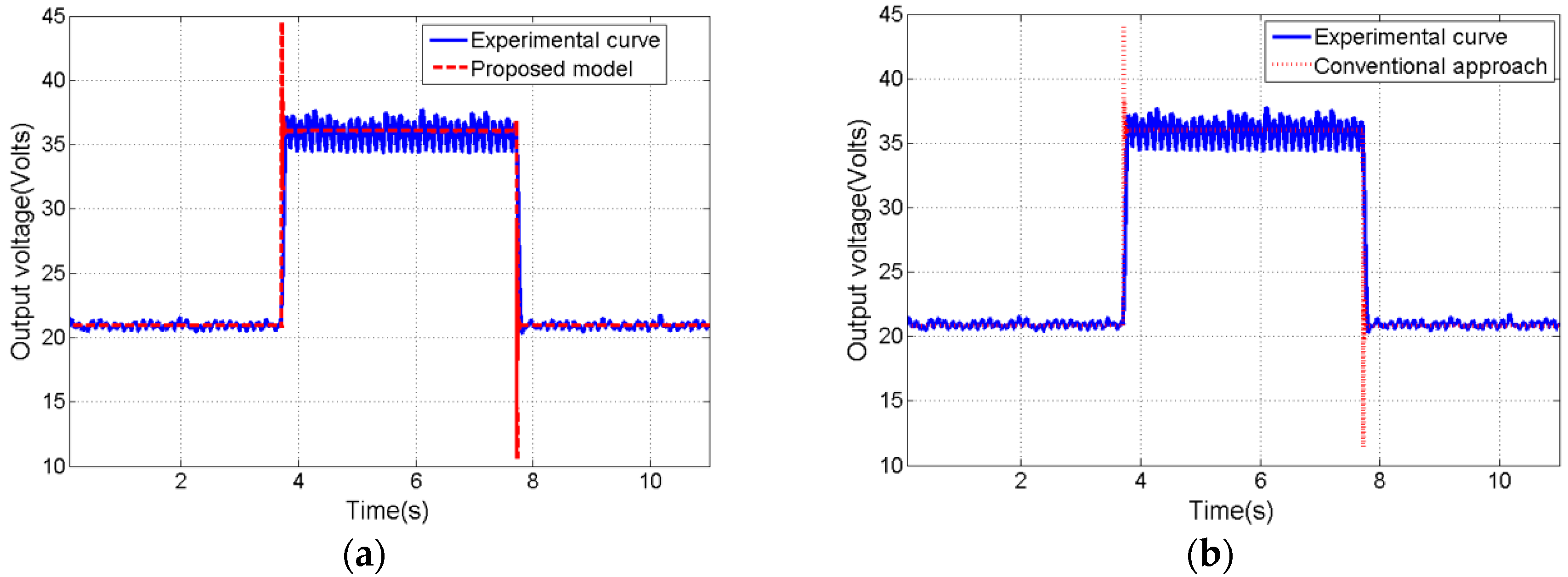
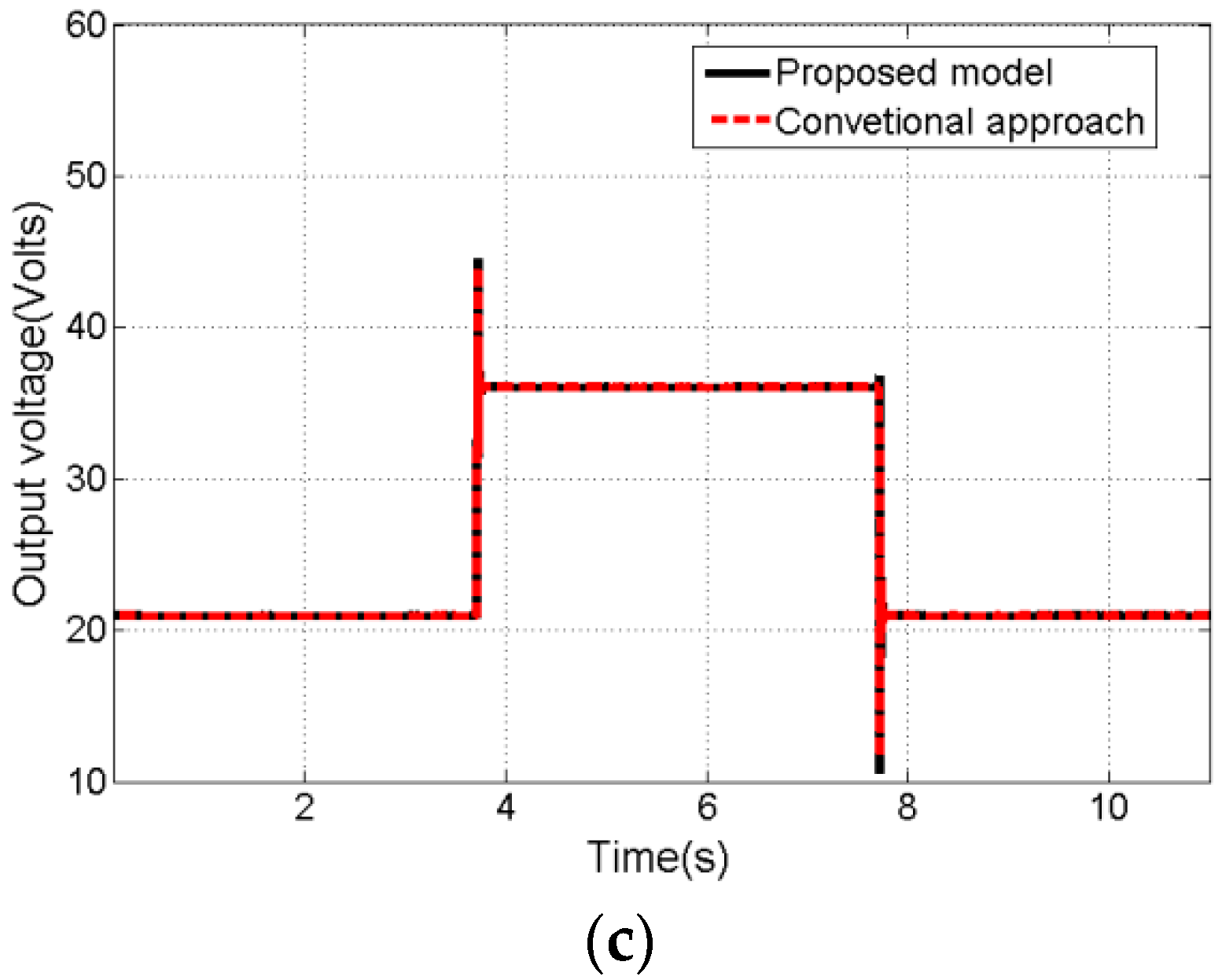
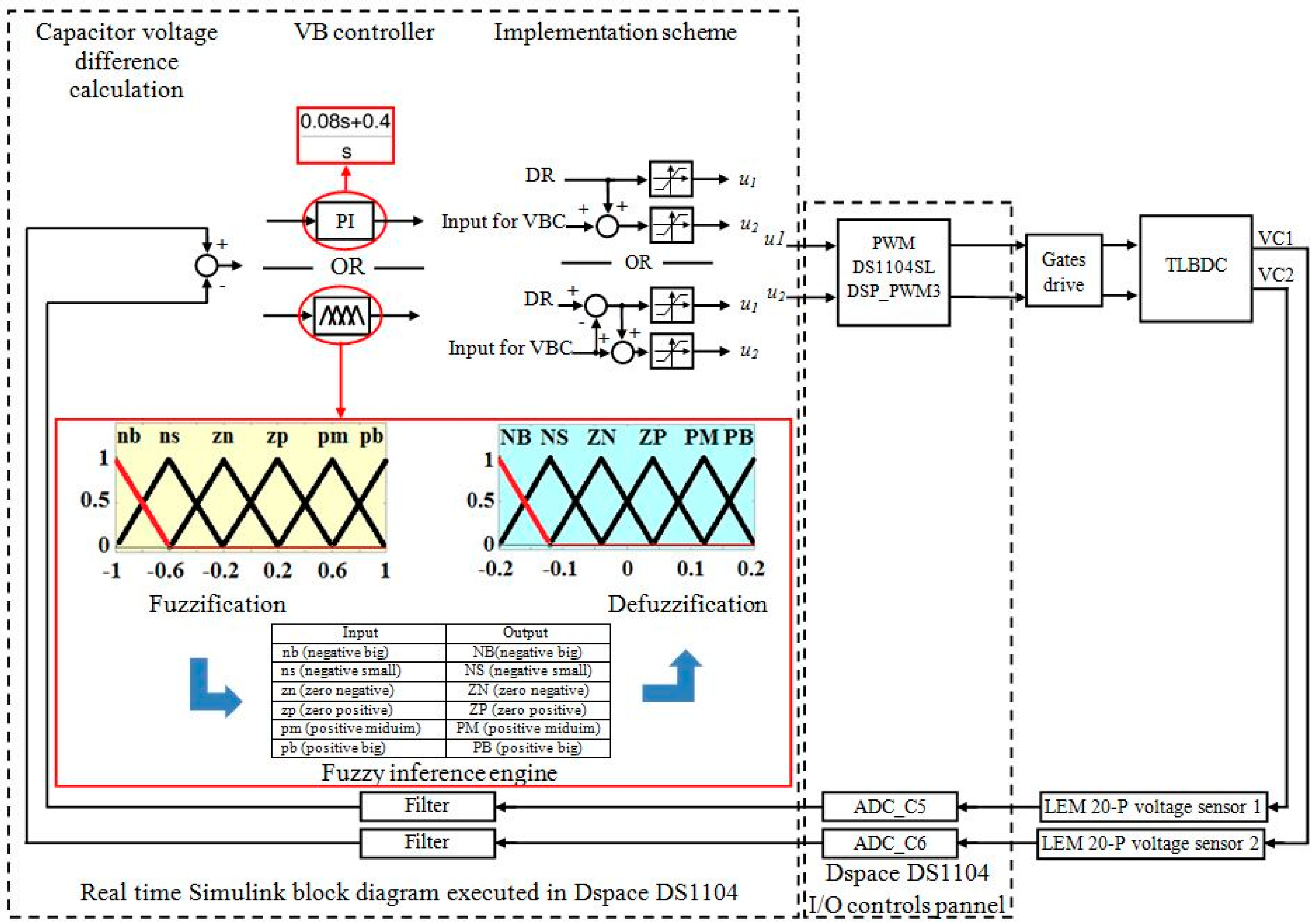
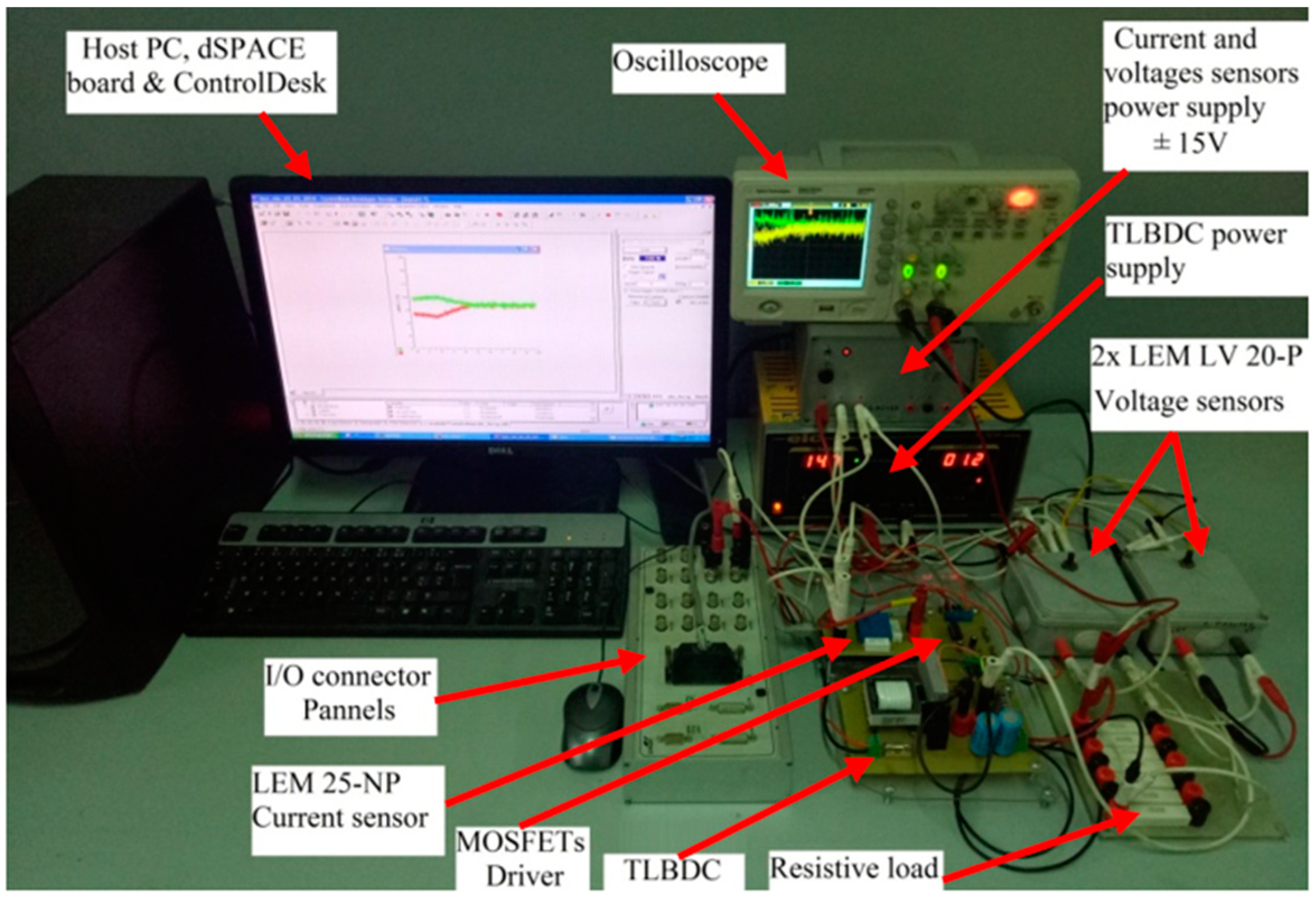
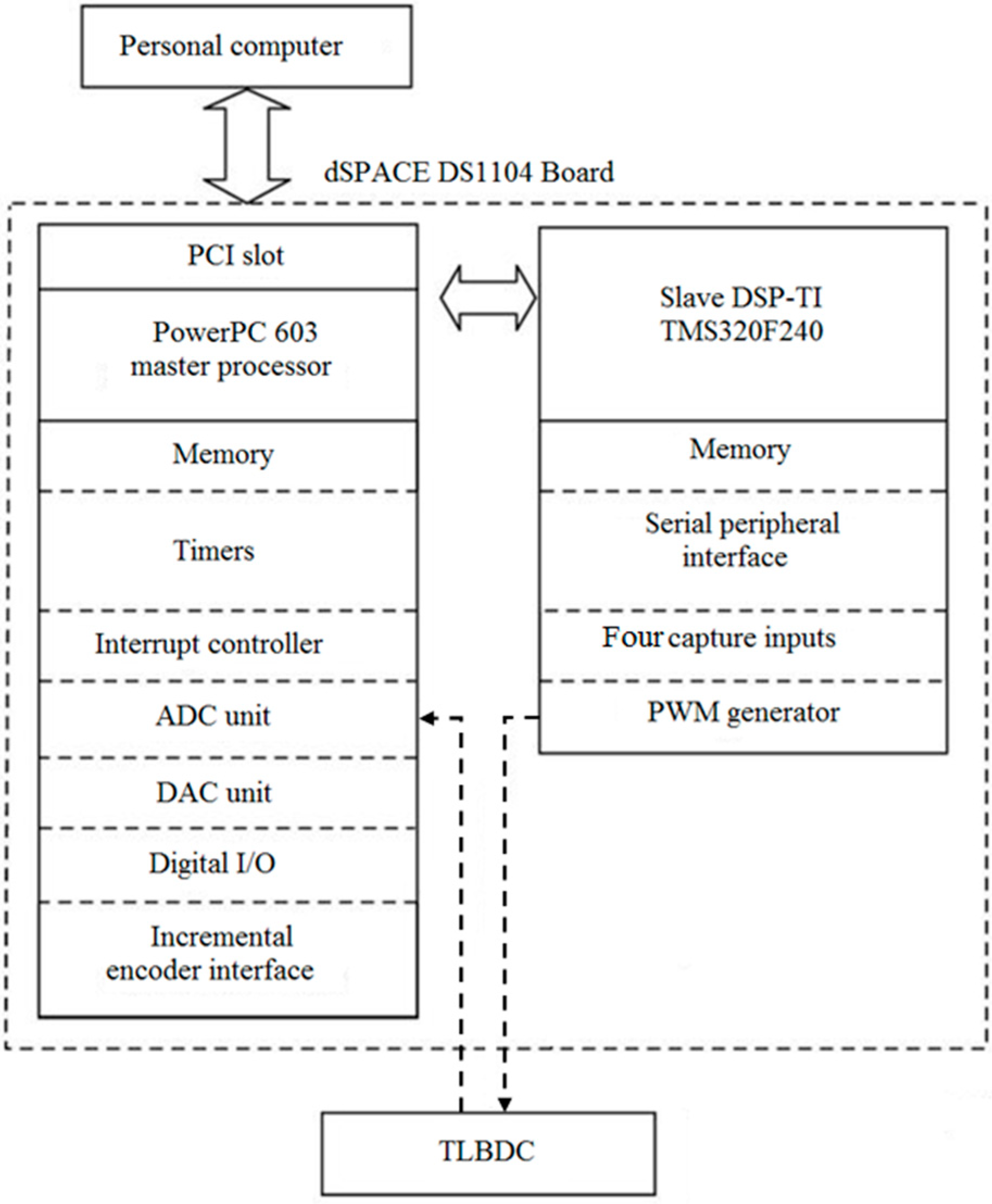

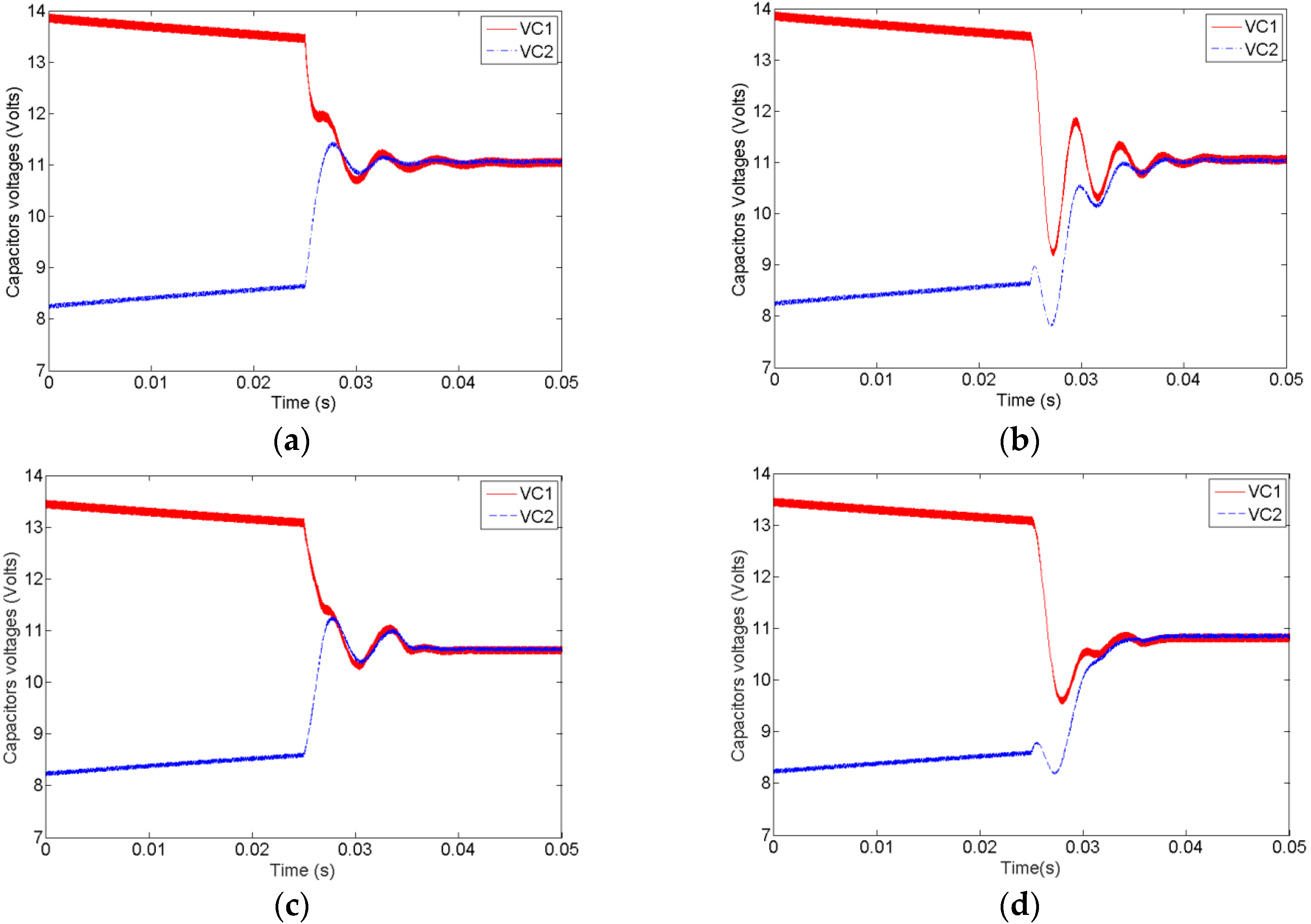

| State of the Control Signals (u1(t)-u2(t)) | Differential Equations |
|---|---|
| 0-0 | |
| 1-0 | |
| 0-1 | |
| 1-1 |
| Parameter | Value |
|---|---|
| Switching frequency | 12.5 kHz |
| Inductance, ESR | 9 mH, 0.1 Ω |
| Output capacitors | 100 uF |
| Input voltage | 15 Volts |
| Load | 82 Ω |
| Diode’s forward voltage | 0.5 Volts |
| VBC | Requested Time to Ensure VBC Applied on One Switch (ms) | Requested Time to Ensure VBC Applied on Either Switch (ms) | |
|---|---|---|---|
| PI | Simulation | 15 | 5 |
| Experiments | 300 | 100 | |
| Fuzzy | Simulation | 10 | 3 |
| Experiments | 150 | 80 | |
© 2018 by the authors. Licensee MDPI, Basel, Switzerland. This article is an open access article distributed under the terms and conditions of the Creative Commons Attribution (CC BY) license (http://creativecommons.org/licenses/by/4.0/).
Share and Cite
Oulad-Abbou, D.; Doubabi, S.; Rachid, A. Voltage Balance Control Analysis of Three-Level Boost DC-DC Converters: Theoretical Analysis and DSP-Based Real Time Implementation. Energies 2018, 11, 3073. https://doi.org/10.3390/en11113073
Oulad-Abbou D, Doubabi S, Rachid A. Voltage Balance Control Analysis of Three-Level Boost DC-DC Converters: Theoretical Analysis and DSP-Based Real Time Implementation. Energies. 2018; 11(11):3073. https://doi.org/10.3390/en11113073
Chicago/Turabian StyleOulad-Abbou, Driss, Said Doubabi, and Ahmed Rachid. 2018. "Voltage Balance Control Analysis of Three-Level Boost DC-DC Converters: Theoretical Analysis and DSP-Based Real Time Implementation" Energies 11, no. 11: 3073. https://doi.org/10.3390/en11113073






